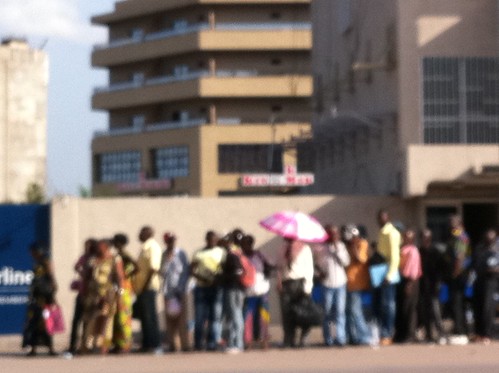 |
| Midday on the Boulevard, No Means to Get Home |
To accommodate all this traffic, Chinese engineers have flooded Kinshasa, engaged in road building and construction enterprises, attempting to modernize the dusty unpaved roads and put in proper drainage systems to save the new roads from rainy season.
The city is full of its own systems too -- secret hand signals and noises that alert individuals to the presence or need for goods and services. People at the side of the road lazily hold their hands out, index finger extended, and twirl it around, as though pointing to a dog chasing its own tail. It means that they need a taxi. People selling water make a kissing noise, perhaps to remind you that your lips are parched and in need of some of their delicious refreshing maji.
The men selling sodas clink their metal bottle openers against the glass, and it's a sound that travels quite a distance easily. Other services, like a traveling shoe shine man, makes his own noise. While I've seen the traveling pedicure man at work, I've yet to hear his call, but I am curious to know what it could be!
The Boulevard, the main road down the center of Kinshasa, had once been a lazy avenue of trees -- flanked with landscaping to escape the dusty urban grit. But this past year, the trees were cut down, the grass removed, the landscaping abolished, and the Boulevard was transformed into an 8-lane superhighway!
It's amazing to drive down this highway, partially because there is no posted speed limit, but also because it is an extremely high quality road that seems to not take into account the needs of the hundreds of thousands of pedestrians that Kinshasa is replete with. Zebra stripes (crosswalks) were painted to help people cross the Boulevard, but in reality, people must dart frantically across this enormous mid-city highway, day or night, and cars rarely stop or slow down. It's hot, and dusty, and barren, and the sun bouncing off of the stark concrete compound walls and shop fronts gives little reprieve to passers-by. The trees are gone, and the grass and flowers, and Kinshasa has achieved its goal of feeling less like a town and more like a city.
 |
| Bread Mamas -- all heading away from the bakery |
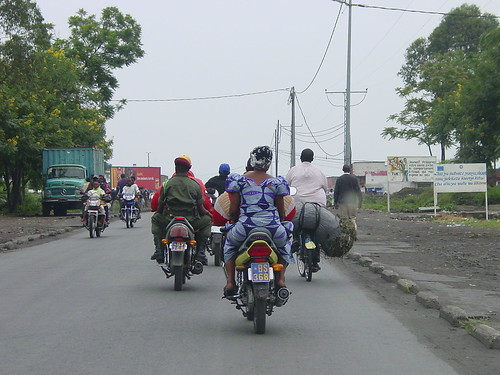 |
| Bicycle Taxis in Goma, DRCongo (Photo I took in 2006) |
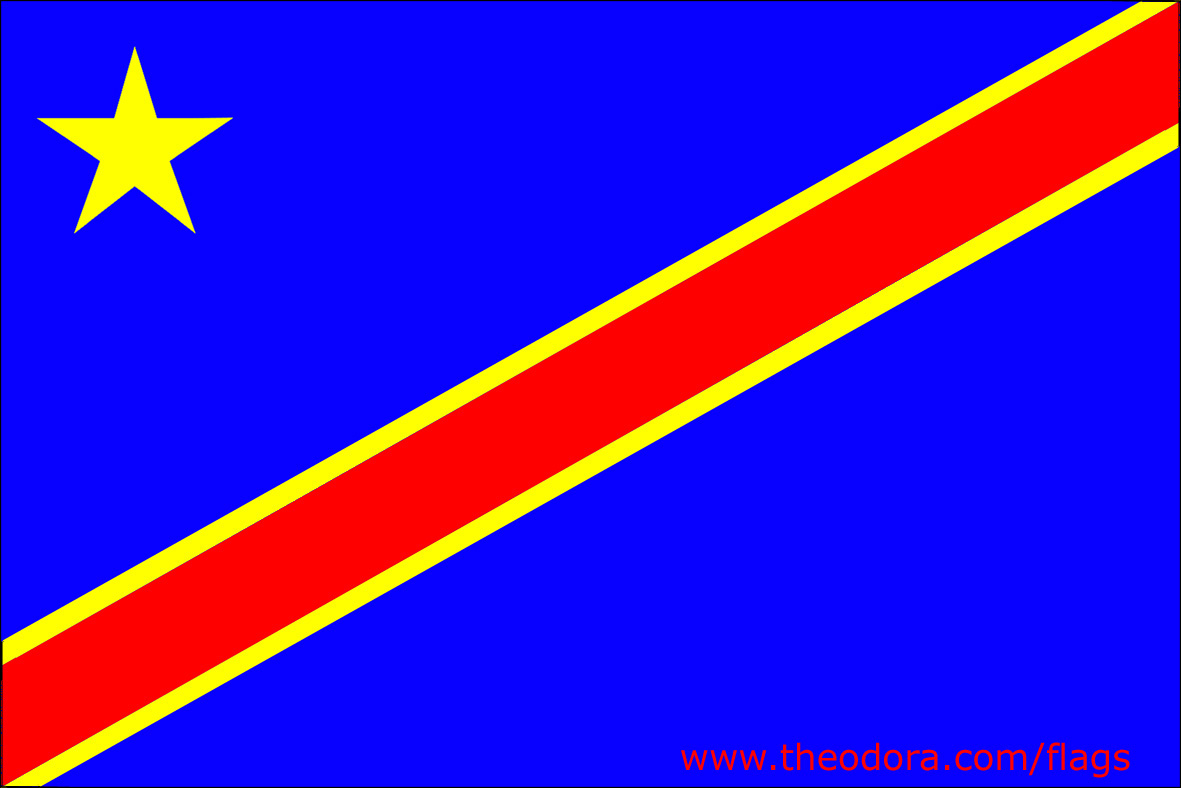 |
| The amended flag of 2006 (the red stripe was added) |
Because, despite the rust, and the doors falling off their hinges, and the windows made of tape or plastic bags or cardboard or some combination of all three, these vans continue to run, because they MUST continue to run. As Kinshasa continues to grow and expand, giving more economic opportunities to the Congolese, the necessity of travel, especially over longer distances, taxes the current privately-owned transportation system. And, as a result, during peak travel hours, I have seen upwards of 100 people waiting at the side of the road, baking in the sun, waiting for a van with available seats to come along.
 |
| All these people are waiting for transport |
I asked a couple taxi men why there weren't more minibus taxis being bought to accommodate the extra need. Money. Credit. And Stability. Getting credit to buy a minibus here is nigh impossible, because a country that has only just enjoyed "stability" (or a local approximation of it) for the last couple years isn't really the ideal locale for a loan. Gas is expensive. Repairs are expensive. The roads that aren't the boulevard take a toll on the wheels, the alignment, the undercarriage because they're so bad and riddled with potholes. Few people have the means to set up a minibus enterprise, and, for the time being, the government isn't doing anything to help them out. So people wait.
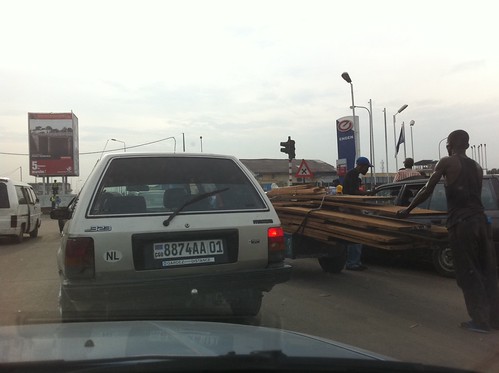 |
| Push-pushes, cars, and me, waiting at a non-functioning traffic light in Kinshasa |
I look forward to continuing to work in DRC and seeing how Kinshasa ends up addressing some of these issues. If the elections this November go smoothly, perhaps creditors will be more willing to lend here, and the cogs of independent infrastructure that have sprung up to deal with other needs of a big city will address the transportation issue. In the interim, people make due! Like this guy, who needed a ride while traveling with lots of parcels, but couldn't find space!
 |
| Stuntmen get paid extra for this |
Here is a minibus, the conductor hanging out the side (as is usual), stopping to pick up passengers at the side of the road:
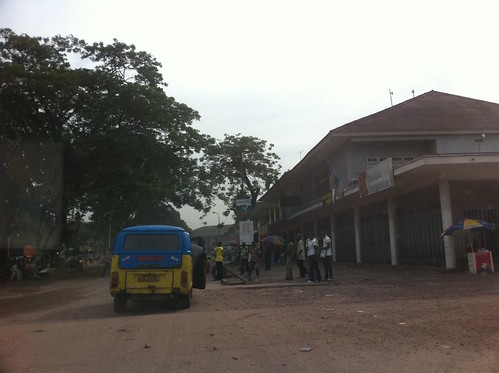 |
| Most minibus taxis are painted blue and yellow like this one |
1 comment:
Minibuses were pretty common in Egypt which isn't surprising as paved roads are pretty common. They do sometimes have the overcrowding issue with people hanging off the back. At other times they're empty enough to actively be promoting their services. Either way, I think Cairo probably had enough that they were doing a better job of meeting the demand.
Post a Comment